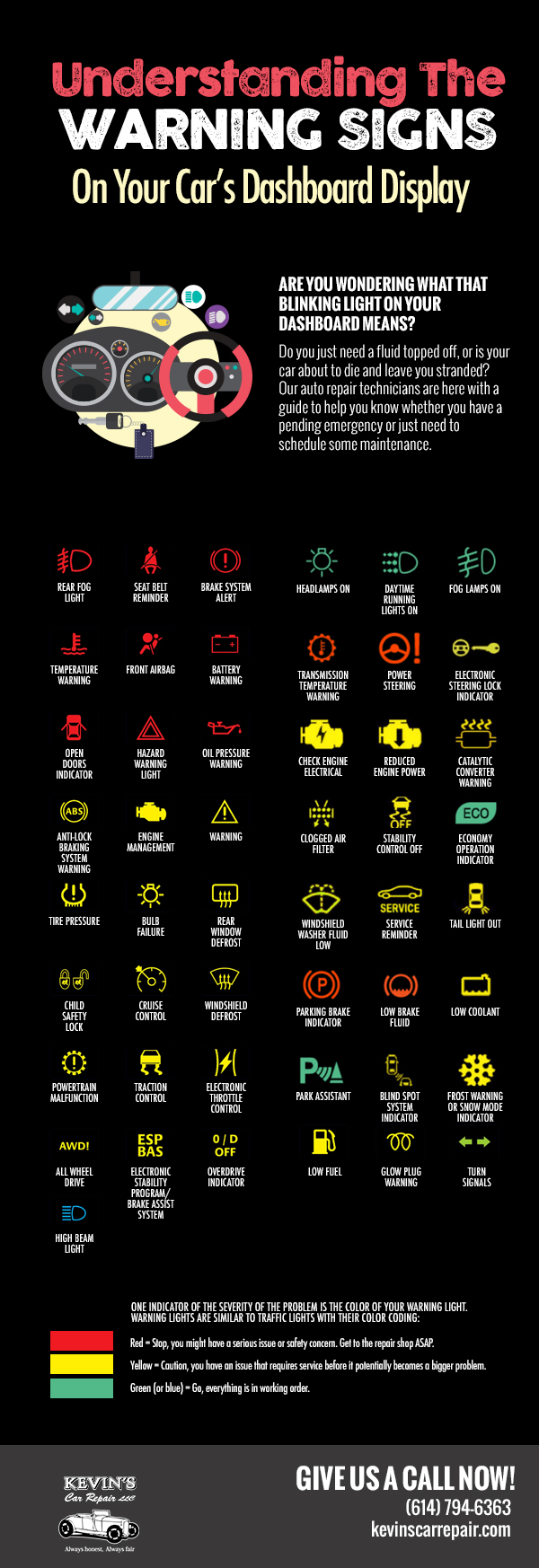Translating Your Vehicle'S Caution Indicators: What They Really Signify
Translating Your Vehicle'S Caution Indicators: What They Really Signify
Blog Article
Post By-Faulkner Stark
When you lag the wheel, those beautiful caution lights on your control panel can be a little bit puzzling. Do you know what they're attempting to inform you regarding your cars and truck's health and wellness? Understanding the relevance of these lights is crucial for your safety and security and the long life of your lorry. So, the following time one of those lights turns up, would not you want to decipher its message properly and take the essential actions to address it?
Common Warning Lights and Interpretations
Determine common caution lights in your automobile and understand their significances to make certain risk-free driving.
One of the most normal caution lights include the check engine light, which signals problems with the engine or exhausts system. If this light comes on, it's vital to have your automobile examined promptly.
The oil pressure warning light indicates reduced oil stress, needing prompt focus to stop engine damage.
car valet blinking battery light might suggest a damaged charging system, possibly leaving you stranded otherwise dealt with.
The tire pressure surveillance system (TPMS) light notifies you to reduced tire stress, affecting automobile stability and gas efficiency. Neglecting this might lead to unsafe driving problems.
The abdominal muscle light suggests a trouble with the anti-lock stopping system, jeopardizing your capacity to quit promptly in emergencies.
Last but not least, the coolant temperature warning light warns of engine getting too hot, which can cause serious damages if not dealt with swiftly.
Comprehending these common warning lights will certainly aid you resolve concerns promptly and keep safe driving conditions.
Significance of Prompt Interest
Recognizing the typical warning lights in your vehicle is only the primary step; the significance of immediately attending to these cautions can not be emphasized sufficient to guarantee your security on the road.
When a caution light illuminates on your control panel, it's your car's method of interacting a potential problem that needs attention. Disregarding these cautions can cause a lot more severe troubles down the road, jeopardizing your safety and security and possibly costing you extra in repairs.
Prompt focus to advising lights can protect against malfunctions and crashes. For example, a flashing check engine light can indicate a misfire that, if left unattended, can cause damage to the catalytic converter. Addressing car detialing can save you from a pricey repair work.
In a similar way, a brake system alerting light could signify low brake liquid or worn brake pads, critical elements for your safety when driving.
DIY Troubleshooting Tips
If you discover a caution light on your control panel, there are a few do it yourself repairing pointers you can try prior to looking for expert aid.
The initial step is to consult your automobile's manual to understand what the certain caution light suggests. Occasionally the concern can be as easy as a loosened gas cap triggering the check engine light. Tightening up the gas cap may deal with the problem.
One more common concern is a low battery, which can set off different alerting lights. Examining related web site for deterioration and ensuring they're protected may fix the problem.
If a caution light lingers, you can attempt resetting it by separating the vehicle's battery for a few mins and then reconnecting it. Additionally, checking your lorry's liquid levels, such as oil, coolant, and brake fluid, can aid troubleshoot cautioning lights connected to these systems.
Verdict
To conclude, recognizing your automobile's caution lights is crucial for maintaining your vehicle running efficiently and safely. By promptly resolving these informs and understanding what they mean, you can stay clear of costly repairs and possible failures.
Bear in mind to consult your automobile's guidebook for particular information on each warning light and take action as necessary to guarantee a hassle-free driving experience.
Remain informed, remain secure when traveling!
